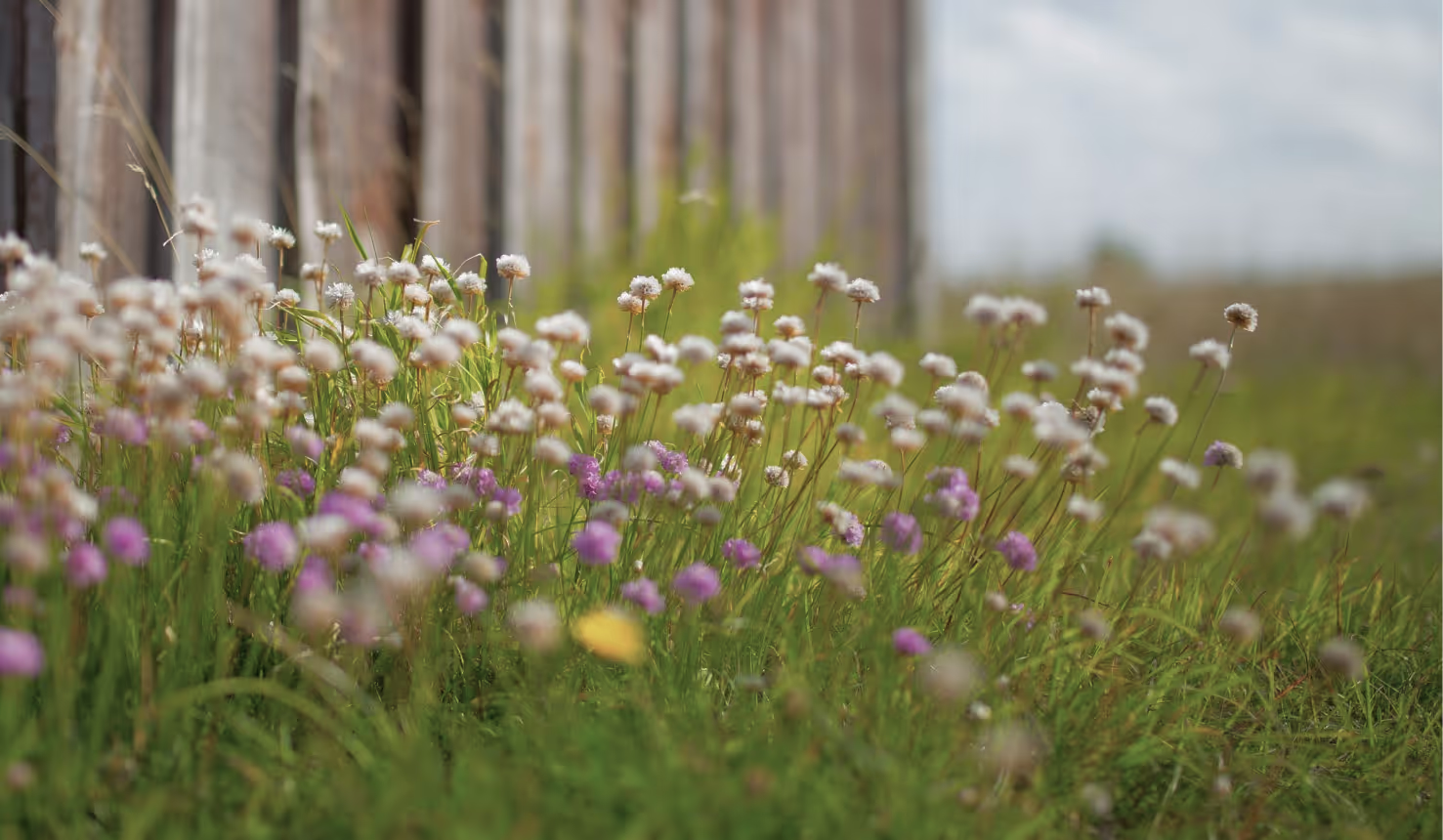20 Lush Grass Alternatives to Replace Your Lawn

Join the community





There’s a moden movement to get rid of lawns. Once iconic to suburban streets, lawns are becoming a symbol of the resources they require like excess water, fertilizer use, and mowing. Plus, lawns take up space that could otherwise be occupied by more biodiverse, native plants that can fight the effects of climate change.
Choosing grass alternatives offers a myriad of benefits for both the environment and homeowners. Lawn alternatives, such as creeping thyme or elfin thyme, require less water, reducing overall water consumption. Ground cover alternatives to grass like clover or mazus enhance biodiversity by attracting beneficial insects and pollinators.
Unlike traditional lawns, grass substitutes like Dymondia or brass buttons are often drought-tolerant, promoting sustainable landscaping practices. These grass alternatives for lawns also eliminate the need for frequent mowing, saving time and reducing emissions from lawn equipment.
And they look good, too. Grass alternatives can provide unique textures and colors, enhancing the aesthetic appeal of outdoor spaces while offering practical solutions for low-maintenance, eco-friendly, biodiverse landscapes.
20 Grass Alternatives for Lawns
1. Creeping Jenny (Lysimachia nummularia)
A low-growing, fast-spreading perennial with vibrant green foliage and yellow flowers.
- Pros: Tolerates various soil types. Spreads quickly, forming a dense mat.
- Cons: Can be invasive in some regions.
2. Creeping Thyme (Thymus serpyllum)
Low-growing herb with fragrant leaves and tiny pink or purple flowers.
- Pros: Drought-tolerant.Releases a pleasant aroma when crushed.
- Cons: Slow to establish, prefers well-drained soil. May not withstand heavy foot traffic.
3. Irish Moss (Sagina subulata)
Delicate, moss-like ground cover with tiny white flowers.
- Pros: Forms a lush carpet. Thrives in partial shade.
- Cons: Requires consistent moisture.
4. Sedum (Sedum spp.)
Fleshy leaves in various colors, drought-tolerant and easy to grow. Native to Europe and Asia.
- Pros: Drought-resistant. Attracts butterflies.
- Cons: Some varieties may spread aggressively.
5. Vinca Minor (Vinca minor)
Evergreen with glossy leaves and blue-purple flowers.
- Pros: Rapid spreading. Thrives in shade.
- Cons: Invasive in some areas.
6. Roman Chamomile (Chamaemelum nobile)
Low-growing herb with feathery foliage and daisy-like flowers. Europe and western Asia.
- Pros: Tolerates light foot traffic. Releases a calming scent.
- Cons: Needs well-draining soil.
7. Brass Buttons (Leptinella squalida)
Tiny fern-like leaves forming a dense mat. Native to New Zealand, Australia, and South America.
- Pros: Tolerates poor soil. Low maintenance.
- Cons: Not suitable for heavy traffic.
8. Ice Plant
Succulent leaves and saturated, bright pink daisy-like flowers. Native to southern Africa.
- Pros: Drought-tolerant, vibrant blooms.
- Cons: May struggle in cold climates, needs well-drained soil.
9. Corsican Mint (Mentha requienii)
Fragrant mint with small, rounded leaves. Native to Corsica, Sardinia, and mainland Italy.
- Pros: Aromatic ground cover. Ideal for moist, shaded areas.
- Cons: Requires consistent moisture.
10. Woolly Thyme (Thymus pseudolanuginosus)
Fuzzy, gray-green leaves. Native to Europe.
- Pros: Drought-resistant. Tolerates poor soil.
- Cons: Slow to establish.
11. Deadnettle (Lamium spp.)
Low-growing with silver-green foliage. Native to Europe and Asia.
- Pros: Thrives in partial shade. Fast spreading.
- Cons: May become invasive.
12. Blue Star Creeper (Pratia pedunculata)
Star-shaped blue flowers above a carpet of small leaves. Native to Australia and New Zealand.
- Pros: Tolerates light foot traffic.Blue flowers add color.
- Cons: Requires regular watering.
13. Herniaria Glabra (Rupturewort)
Creeping perennial with tiny green leaves. Native to Europe and Asia.
Pros: Drought-tolerant. Suitable for low-traffic areas.
Cons: Slow to establish.
14. Mazus reptans (Mazus)
Creeping perennial with purple or white flowers. Native to China, Japan, Korea, and Vietnam.
- Pros: Spreads quickly. Suitable for moist soils.
- Cons: May need occasional pruning.
15. Dymondia (Dymondia margaretae)
Low-growing, silver-green leaves. create a dense mat.Native to South Africa.
- Pros: Drought-tolerant. Forms a dense mat.
- Cons: Slow growth
16. Baby's Tears (Soleirolia soleirolii)
Tiny, rounded leaves forming a lush carpet. Native to Corsica and Sardinia.
- Pros: Ideal for shady areas. Soft texture.
- Cons:Requires consistent moisture.
17. Ajuga (Ajuga reptans)
Ground-hugging with spikes of blue flowers. Native to Europe, Asia, and Africa.
- Pros: Tolerates various soil types.Colorful foliage.
- Cons: Can be invasive.
18. Elfin Thyme (Thymus serpyllum 'Elfin')
Tiny leaves form a dense, moss-like carpet. Native to Europe.
- Pros: Drought-tolerant, forms a tight mat.
- Cons: Not suitable for high traffic areas.
19. Sweet Woodruff (Galium odoratum)
Whorls of green leaves and fragrant white flowers. Native to Europe and Asia.
- Pros: Thrives in shade. Sweet fragrance.
- Cons: Can spread aggressively.
20. Mondo Grass (Ophiopogon japonicus)
Grass-like with arching leaves. Native to East Asia.
- Pros: Tolerates various conditions. Evergreen.
- Cons: Slow to establish.













